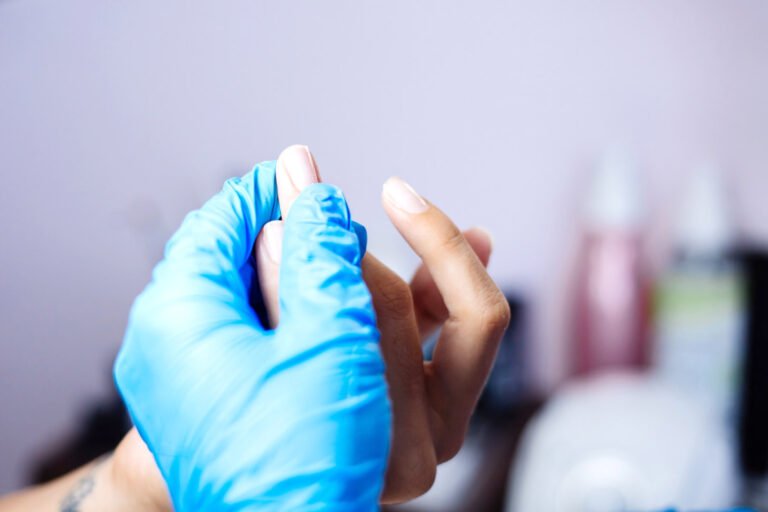Quality Control Medical Devices requires a strong Quality Management System (QMS). This is the foundation that ensures patient safety, protects your organization’s reputation, and guarantees your products consistently meet both customer expectations and regulatory requirements. ISO 13485:2016 provides a clear framework for designing, developing, and producing medical devices in a reliable way.
A well-planned QMS process can help you reduce risks of errors, defects, and recalls that could harm your business. Whether you’re new to medical device manufacturing or looking to improve your current systems, this guide will walk you through proven steps to achieve and maintain FDA compliance.
The FDA is also working on an update to its Quality Management System Regulation (QMSR) to better harmonize with ISO 13485 and international regulatory authorities. This updated rule, set to take effect on February 2, 2026, represents an important step toward global alignment—but it’s more of an adjustment than a major change.
Understanding Quality Control in Medical Devices
Medical device quality control is the life-blood of reliable healthcare technology delivery. Quality management needs this vital component with specific processes that safeguard patients and ensure regulatory compliance. Let’s get into how quality control works in medical devices and its significance.

What is quality control in medical device manufacturing?
Quality Control Medical Devices in the medical device industry involves a systematic set of procedures that span the entire product lifecycle. From incoming materials to final inspections, QC ensures that every stage of manufacturing meets strict quality standards.
ISO 13485:2016, the key standard for medical devices, emphasizes a process-oriented approach to quality. It defines QC as an integral part of quality management—focused not only on final product testing but also on the controls applied throughout the manufacturing process.
QC teams are responsible for verifying materials, performing in-process inspections, and conducting final product checks. Key activities include:
- Product sampling, inspection, and laboratory testing to verify specifications
- Acceptance criteria documentation (required by FDA regulations)
- Complete testing protocols with verification methods
- Corrective and Preventive Action (CAPA) management for non-conforming products
Depending on the device’s complexity and regulatory requirements, inspections may involve visual checks for defects, like cracks or broken parts, as well as functional tests to ensure performance and safety.
How quality control differs from quality assurance
Quality control and quality assurance have different functions within a medical device QMS. Their timing and focus create the main difference.
Quality assurance (QA) takes a proactive and process-oriented approach throughout the manufacturing experience to prevent problems. Quality control reacts to and focuses on the product after production to identify existing issues.
QA uses employee and customer feedback to improve processes. QC verifies that products meet established standards. Both aim to ensure high-quality, safe medical devices through different approaches at different stages.
QA works proactively throughout manufacturing to prevent problems. QC happens at specific checkpoints to detect issues after they occur. A complete quality management system needs both components to work.
Why quality control is critical for patient safety
Medical device manufacturing carries exceptionally high stakes. Device malfunctions can devastate patients. Over one million medical devices are recalled annually for various reasons, which shows why rigorous quality control matters.
Medical devices affect patient health and well-being directly. Quality control becomes a matter of life and death. Real-life examples show what happens without proper QC:
- Implantable insulin pumps fail to administer correct glucose levels
- Defibrillators with broken electrical components can’t deliver lifesaving charges
- Spinal surgery tools experience chemical leaks that could cause paralysis
Quality control helps manufacturers comply with strict FDA regulations. These regulations exist because medical devices play such a critical role in diagnosis, treatment, and patient care.
Beyond compliance and safety, effective QC brings more benefits: better product quality, lower costs through defect prevention, and improved manufacturer reputation among healthcare providers and patients. Industry studies show poor quality control costs the medical device industry between $2.50 billion and $5.00 billion annually.
Quality control stands as the final safeguard before critical healthcare technologies reach dependent patients. Manufacturers protect patients and their organizations from catastrophic failures by investing in complete QC procedures.
The Role of QMS in FDA Compliance
A reliable Quality Management System lays the groundwork for medical device manufacturers to achieve FDA compliance.
The QMS creates a well-laid-out framework that helps companies meet regulatory requirements throughout their product’s lifecycle. Regulatory authorities worldwide recognize QMS as crucial to ensuring medical devices remain safe and effective.

Overview of QMS for medical devices
A medical device QMS includes the processes, procedures, and documentation that guide how companies design, develop, manufacture, and monitor their products. The QMS acts as a formal system that documents the structure, responsibilities, and procedures needed for quality management to work.
The FDA’s Quality System Regulation (QSR) under 21 CFR Part 820 stands as the life-blood of medical device quality requirements in the United States. The FDA issued a final rule on January 31, 2024 to make these requirements match international standards more closely. This new rule, called the Quality Management System Regulation (QMSR), brings in ISO 13485:2016 and becomes effective February 2, 2026.
The FDA takes an “umbrella” approach to QMS. This provides a framework that all manufacturers must follow without dictating specific methods for producing devices. Manufacturers can develop suitable procedures based on modern manufacturing practices for their devices.
How ISO 13485 supports FDA requirements
ISO 13485 stands as a globally recognized standard that sets requirements for medical device QMS. This standard shows that manufacturers know how to provide devices and services that meet customer and regulatory requirements consistently.
The FDA found that ISO 13485:2016 requirements match QSR requirements closely and provide similar assurance in quality management systems. The standard focuses on quality and safety from design and development through production and post-market monitoring.
The FDA played a key role in creating and maintaining ISO 13485 since its inception in 1996. Through collaboration with ISO, both systems now align better, which makes switching to the new QMSR easier for manufacturers who know ISO 13485.
Differences between ISO 13485 and 21 CFR Part 820
Despite their similarities, ISO 13485 and 21 CFR Part 820 differ in several ways:
- Structure and Terminology: Each standard uses different organization structures and terms, which can confuse organizations trying to follow both.
- Documentation Approach: ISO 13485 gives more specific documentation requirements, while 21 CFR Part 820 focuses more on performance.
- Risk Management Focus: ISO 13485 emphasizes risk management throughout the product lifecycle more than 21 CFR Part 820.
- Supplier Management: ISO 13485’s requirements for supplier management processes are more detailed than 21 CFR Part 820.
On top of that, the QMSR adds provisions to ISO 13485 that ensure consistency with FDA’s statutory framework. These additions cover specific definitions, documentation requirements, and regulatory expectations.
Manufacturers with ISO 13485:2016 certification will see minimal changes with QMSR. Companies focused only on the U.S. market that follow 21 CFR Part 820 will need bigger adjustments. The two-year implementation period gives companies time to adapt their processes and documentation to meet new requirements.
Key Components of a Compliant Medical Device QMS
A compliant medical device QMS needs several key components that work together to ensure product safety and regulatory adherence. These elements play a vital role and help maintain quality throughout the product lifecycle.
Document control and record keeping
Quality management systems need document control as their foundation to work properly. Your procedures must be documented, reviewed, and available. FDA 21 CFR Part 820.40 requires manufacturers to establish procedures that control all documents required by regulations. The requirements cover document approval with dated signatures, distribution to relevant locations, and quick removal of obsolete documents.
Record keeping has several critical files like the Design History File (DHF), Device Master Record (DMR), and Device History Record (DHR). Your DMR should have all specifications needed to build and test your device. The DHR shows that manufacturing followed DMR requirements. You must keep these records for at least two years from the release date or the expected life of the device, whichever takes longer.
Design and development controls
Design controls make sure devices meet user needs and intended uses. FDA 21 CFR Part 820.30 requires manufacturers to set up procedures for design planning, inputs, outputs, verification, validation, transfer, and changes. Your design inputs define performance criteria and requirements that come from user needs. Design outputs are documents you give to someone assembling your product.
Independent individuals who aren’t directly responsible for the stage being reviewed must participate in design reviews. This creates accountability and objectivity during development.
Supplier and purchasing controls
Purchasing controls make sure components and services meet specified requirements. Manufacturers must review and select suppliers based on their ability to meet quality requirements under 21 CFR 820.50. You need to document and maintain this evaluation.
Your purchasing agreements should tell suppliers to notify you about changes that might affect product quality. You should monitor suppliers regularly based on how important their product is.
Production and process validation
Process validation becomes necessary when you can’t fully verify results through inspection and testing. The FDA uses a three-phase approach:
- Installation Qualification (IQ): Making sure equipment is properly installed
- Operational Qualification (OQ): Testing process parameters to verify operation
- Performance Qualification (PQ): Showing consistent production under normal conditions
You need to revalidate when changes or process deviations might affect product quality.
Corrective and preventive actions (CAPA)
CAPA systems help you identify, document, and fix quality problems while preventing them from happening again. The FDA calls CAPA “one of the most important quality system elements.” Your CAPA process should include ways to analyze quality data, investigate root causes, implement proper actions, and verify if they worked.
ISO 13485:2016 talks about corrective action in section 8.5.2 and preventive action in 8.5.3. The standard emphasizes quick action and proper documentation of the whole process.
Steps to Achieve FDA Compliance

The FDA’s final rule now matches ISO 13485:2016. Medical device manufacturers need a well-laid-out approach to meet compliance standards. Here are five proven steps to build a compliant quality control system for medical devices:
1. Conduct a gap analysis
Start with a detailed gap analysis to spot differences between your current practices and what regulations require. This vital first step needs a review of all documentation, design files, clinical data, and risk assessments. A good gap analysis does more than find non-compliance issues. It shows where you already meet the requirements. Outside experts often give a fresh point of view and help find critical gaps you might miss. Your final report should list practical ways to fix any problems.
2. Arrange with ISO 13485:2016
Your QMS must match ISO 13485:2016 standards by February 2, 2026, under the new QMSR. The FDA says ISO 13485 requirements are like QSR regulations. All the same, it’s worth mentioning that ISO 13485 certification won’t stop FDA inspections. You must follow existing QSR rules while getting ready for the new system during this transition.
3. Implement risk-based thinking
Risk-based thinking should spread beyond quality departments to your entire organization. ISO 13485:2016 puts a strong focus on risk management. This transforms reactive problem-solving into proactive risk spotting and control throughout the product lifecycle. Your risk management process should follow the ISO 14971 standard. This standard has sections on finding hazards, checking risks, and putting the right controls in place.
4. Confirm software and processes
You need to check all software and processes that inspection and testing can’t fully verify. The FDA suggests a three-phase approach:
- Installation Qualification (IQ) – verifying proper equipment installation
- Operational Qualification (OQ) – challenging process parameters
- Performance Qualification (PQ) – demonstrating consistent production under normal conditions
Software validation should match the level of risk. Higher safety risks need more thorough validation.
5. Train staff and assign responsibilities
Your team needs the right education and skills to do their jobs well. Both FDA requirements and ISO 13485 say you must know what each role needs and give the right training. The training must work, not just be documented. Your staff should know how their mistakes might cause device defects. Keep detailed training records ready for inspections.
Common Pitfalls and How to Avoid Them
Medical device manufacturers often run into common obstacles that can derail compliance efforts, even with a well-laid-out QMS. You can avoid getting pricey mistakes and maintain regulatory standing by learning about these pitfalls.
Overlooking post-market surveillance
Post-market surveillance (PMS) plays a vital role in tracking live performance and safety of medical devices after market entry. Many manufacturers focus on pre-market activities at first. PMS offers a broader view by analyzing real-life usage data. This ongoing monitoring ended up verifying medical devices’ practical safety and utility.
Common PMS mistakes include:
- Poor documentation of feedback
- Failure to break down complaints really well
- Missed reporting deadlines for adverse events
Your PMS system needs regular staff training on procedures and processes. This ensures the core team documents, breaks down, and addresses valuable feedback properly. The system should also adapt to new analytical insights and regulatory changes.
Inadequate documentation practices
FDA 483 observations often stem from poor documentation practices. FDA research showed that 80 percent of inspections in China and India in 2016 failed because of data integrity problems from unreliable documentation. Good Documentation Practices (GDP) are the foundations of good manufacturing practices (GMP).
Watch out for these common documentation errors:
- Back-dated entries
- Overwritten previous entries
- Recording data before actions occur
Neglecting supplier qualification
Supplier management ranks as the fourth most common area where mistakes happen in 21 CFR Part 820 compliance. The supplier assessment level should match the risk of the medical device component or service.
Critical suppliers who provide high-risk components or services like sterilization need more detailed qualification processes. These might include supplier audits. Keep detailed supplier files with qualification forms, certificates, audit reports, and performance evaluations.
Failing to update QMS with regulatory changes
The FDA’s Quality Management System Regulation takes effect February 2, 2026. Manufacturers must line up their practices with QMSR requirements. The transition needs major updates to procedures and documentation to settle differences between current frameworks and upcoming regulations.
Smart manufacturers keep track of regulatory updates and implement them right away. They don’t wait for inspections to find gaps in their system. This forward-thinking approach helps maintain continuous compliance whatever the evolving requirements.
Conclusion
A strong Quality System is essential for successful medical device manufacturing, especially as regulatory frameworks continue to evolve. The FDA’s Quality Management System Regulation (QMSR) marks an important step that requires careful preparation and understanding. Companies that proactively embrace new ideas and adapt their systems will position themselves for long-term success and, most importantly, ensure patient safety.

This piece explores the vital elements of medical device quality management systems. Understanding the unique roles of quality control and quality assurance builds the foundation to manage quality effectively. On top of that, it helps to line up with ISO 13485:2016 standards now as this will make your move to the new QMSR requirements in 2026 much smoother.
The proven steps we covered—gap analyzes, risk-based thinking, proving processes right, and training staff—create a clear path to achieve and maintain compliance. All the same, compliance isn’t a one-time achievement but needs steadfast dedication and adaptation. Your trip through complex requirements becomes easier when you ask a consultant who specializes in medical device regulations for help.
Quality control reaches beyond regulatory checkboxes. Good quality systems protect patients, prevent pricey recalls, and boost your company’s market reputation. While compliance needs considerable time and resources, the alternative gets nowhere near the cost—product failures, regulatory actions, and lost trust. Your dedication to quality today protects both patients and your business tomorrow.




